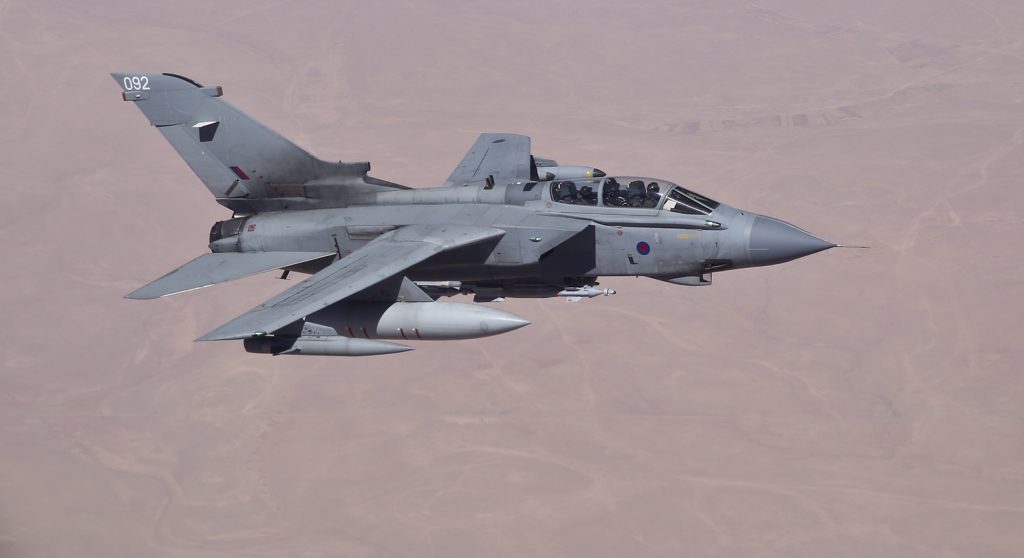After nearly four years of strikes the UK has finally admitted to a single civilian casualty

After nearly four years of airstrikes in Iraq and Syria, the United Kingdom has admitted for the first time that its forces caused civilian harm during anti-ISIS operations, when a missile fired from a Reaper drone this March also killed one non-combatant in eastern Syria.
The May 2nd admission came just a day after an exclusive BBC report quoted a Coalition source who said the British had likely caused civilian casualties “on several occasions.” That source cited a January 9th 2017 strike in Mosul that they said “almost certainly” killed two civilians. The British MoD countered what appears to be its partners’ own findings, contending the dead were probably ISIS fighters.
However in a written statement to Parliament, the British Secretary of State for Defence, Gavin Williamson MP, conceded a separate and much more recent incident – far removed from the large-scale battles of Mosul and Raqqa. This occured on March 26th 2018, in an area of eastern Syria where ISIS fighters had yet to be defeated.
“During a strike to engage three Daesh fighters a civilian motorbike crossed into the strike area at the last moment and it is assessed that one civilian was unintentionally killed,” said Williamson, using an Arabic term for the terror group. “We reached this conclusion after undertaking routine and detailed post-strike analysis of all available evidence.”
Failure to investigate on the ground
The question of non-US partner culpability has proved vexing. In May 2017, Airwars revealed that US officials had determined that partner nations had caused at least 80 civilian deaths. No Coalition member will publicly accept responsibility for any of the incidents, which were released in bulk without any identifying information.
Since then, Australia and the Netherlands have joined the United States in admitting to involvement in incidents where civilians were killed or injured. Far larger military contributors the UK and France had remained silent.
In the BBC investigation – for which defence correspondent Jonathan Beale again traveled to Mosul to see the damage wrought on the city by airstrikes – he reported that Britain’s Coalition partners have “highlighted or ‘flagged’, several incidents when UK airstrikes may have caused civilian harm” but “on each occasion the MoD says it saw no evidence it caused civilian casualties.”
The newly conceded British casualty incident was observable thanks to Coalition video taken from the air, according to the Defence Secretary’s statement. From the first Coalition admissions, investigators have shown a bias towards cases: out in the open, and where follow-up investigations – either involving travel to the location or interviews with locals – are not required.
The Coalition and partner allies do not as a matter of policy speak with locals, or visit allegation sites. Yet most civilian casualty incidents monitored by Airwars likely would be impossible to confirm solely based on aerial reconnaissance, occurring as they often do in dense urban environments such as those in Raqqa and Mosul. As former deputy RAF commander Air Marshal Greg Bagwell has recently noted, “you can’t see through rubble.”
Urban strikes
According to the former UK Defence Secretary Michael Fallon, Royal Air Force planes carried out strikes on more than 750 targets during the campaign to liberate Mosul – “second only the US.” As Airwars has previously reported, Coalition strikes in Mosul were more often carried out with little or no knowledge of who remained inside buildings – an issue that extends to any post-strike analysis.
There is no official civilian death count for the battle of Mosul, but an investigation by the Associated Press has placed the toll at between 9,000 and 11,000 killed by all parties from October 2016 to June 2017. In total, Airwars tracked between 6,000 and 9,000 non combatant deaths variously attributed to the Coalition by local sources, and estimated that a minimum of between 1,066 and 1,579 likely died due to Coalition air and artillery strikes. This almost certainly represents a significant undercount, due to confused reporting at the time. It is telling that Britain’s first civilian casualty admission came not from Mosul – where it launched more attacks than anywhere else in Iraq or Syria – but from the deserts of eastern Syria.
“While the UK’s concession of a civilian fatality from one of its airstrikes against ISIS is a welcome step towards greater accountability, we’re concerned that it has taken the MoD almost four years and 1,600 strikes before making any such admission,” said Airwars director Chris Woods.
“Thousands of civilians have credibly been reported killed in Coalition actions to defeat so-called Islamic State – and airstrikes remain the primary cause of death. We hope the UK will now properly investigate the hundreds of additional potential civilian harm events its aircraft have recently been implicated in.”